ESP32 vs RP2040 vs STM32: Which is Best for Your Project?
2024-07-12
6376
Among these, the ESP32, RP2040, and STM32 microcontrollers each offer unique advantages, making them suitable for diverse applications.
This article delves into the specifics of these three MCUs to inform your project's optimal chip selection.
Catalog

The ESP32, developed by Espressif Systems, stands out with its robust wireless connectivity options, including Wi-Fi and Bluetooth.
This dual-core MCU is engineered to support applications that require reliable and extensive wireless communication.
ESP32's extensive networking capabilities make it ideal for IoT applications, where constant connectivity and real-time data transmission are crucial.
For instance, consider a smart home system where multiple devices need to communicate seamlessly.
The ESP32 facilitates not only device communication but also integration with cloud services, enhancing user experience through remote monitoring and control.
Furthermore, the integration of security features like hardware-accelerated encryption ensures data integrity and privacy, which is vital in protecting user data against breaches and cyber threats.
The RP2040, introduced by Raspberry Pi Foundation, offers impressive performance with its dual ARM Cortex-M0+ cores and flexible I/O options.
This MCU is particularly favored in educational contexts and hobbyist projects due to its cost-effectiveness and ease of use.
It allows users to prototype quickly and iterate designs efficiently.
Making it an excellent choice for development and learning environments.
A practical example is its use in DIY robotics where rapid prototyping is necessary.
Due to its GPIO flexibility, users can integrate sensors, motors, and other components with ease, creating sophisticated robots without significant investment.
Additionally, the RP2040's support for multiple programming environments, such as MicroPython and C/C++, further broadens its appeal.
By lowering the barrier to entry for new developers and educational institutions seeking robust yet affordable hardware solutions.
STM32 microcontrollers, by STMicroelectronics, are renowned for their versatile performance, reliability, and extensive peripheral support.
The STM32 family covers a wide range of performance, from low-power to high-performance applications.
Making it suitable for complex industrial systems, medical instruments, and advanced consumer electronics.
Industrial automation systems often demand real-time processing and high reliability.
STM32 MCUs excel in such environments, thanks to their broad range of built-in peripherals and energy-efficient profiles.
For example, in a factory automation setup, the STM32 can manage sensor data, coordinate machinery operations, and ensure seamless communication protocols without compromising on power efficiency.
Moreover, the long-term availability assurance provided by STMicroelectronics ensures that system integrators can rely on a stable supply chain, which is essential for maintaining continuity in industrial projects.
In making a choice among ESP32, RP2040, and STM32, it is crucial to consider the specific requirements of your project.
If your project relies heavily on connectivity, the ESP32's advanced wireless features make it an ideal candidate.
For educational purposes and rapid prototyping, the RP2040 offers an economical and versatile platform.
On the other hand, for applications demanding comprehensive performance and long-term reliability, STM32 provides a robust solution.
What is a Microcontroller?
A microcontroller is an integrated circuit that consolidates the primary components of a microcomputer onto a single chip. It's predominantly used to control and monitor various electronic devices and systems.
This compact yet versatile device comprises:
- Memory
- A microprocessor
- System control logic circuitry
- Input-output interfaces
Through programming, microcontrollers can perform a wide range of control tasks and communicate effectively with external devices.
Can these tiny devices be the unsung heroes of modern technology? Microcontrollers are indeed omnipresent in modern technology, embedded in devices ranging from household appliances to complex industrial machines.
For instance, an experienced engineer working on an automatic washing machine would utilize a microcontroller to:
- Regulate water levels
- Control the drum's motion
- Manage the timing of different wash cycles
The microcontroller's programmability allows these devices to adapt to various conditions and user preferences, enhancing their functionality and efficiency. Isn't it fascinating how such a small component can handle so much complexity?
In automotive systems, microcontrollers play a crucial role.
They are involved in:
- Engine management
- Anti-lock braking systems
- Infotainment systems
A seasoned automotive technician may reprogram the microcontroller within an engine control unit to:
- Optimize performance
- Troubleshoot connectivity issues with sensors
This flexibility highlights the significant role of microcontrollers in ensuring vehicles operate reliably under diverse conditions. How do they manage to synchronize so many operations seamlessly?
Furthermore, in the realm of IoT (Internet of Things), microcontrollers serve as the backbone for a plethora of smart devices.
Imagine developing a smart thermostat; a professional would employ a microcontroller to:
- Process sensor data
- Execute control algorithms
- Facilitate connectivity with a smartphone app
This integration exemplifies how microcontrollers empower IoT devices to deliver enhanced user experiences by responding dynamically to environmental changes.
The versatility and programmability of microcontrollers offer unparalleled advantages in today's technologically advanced world. They:
- Automate routine tasks
- Provide sophisticated solutions adaptable to user needs and environmental variables
As technology evolves, the role of microcontrollers is set to expand. They are becoming even more integral to innovation in electronics and beyond. Could we be on the cusp of even more groundbreaking advancements due to these powerful tiny devices?
ESP32 vs RP2040 vs STM32: Overview
ESP32 Overview
The ESP32, a high-integration, low-power system-on-chip microcontroller by Espressif, integrates wireless communication, dual-core processors, and abundant peripherals, making it suitable for diverse IoT scenarios.

Why is the dual-core feature so advantageous? The 32-bit dual-core processor enables one core to handle Wi-Fi connectivity while the other runs code. It supports both Wi-Fi and Bluetooth connections, features 512 KB of RAM, and has 34 GPIO pins.
In practice, many developers find the dual-core capability particularly beneficial for concurrent processing tasks.
For instance, in a smart home system:
- One core can continuously monitor sensor data.
- The other manages network communication with the home management server.
- This setup enhances system responsiveness and reliability.
RP2040 Overview
The RP2040 is Raspberry Pi's inaugural microcontroller, boasting 264KB of internal SRAM and support for up to 16MB of external flash memory.

Manufactured using the 40nm process node, it incorporates several low-power modes to extend battery life.
Its compact size and high efficiency suit it well for IoT and embedded system applications.
From a practical standpoint, the RP2040's programmable I/O (PIO) contributes significantly to its versatility.
A peculiar aspect to ponder: Developers can reconfigure PIO to handle tasks typically requiring additional hardware.
These may include:
- Custom communication protocols
- Advanced timing functions
Thus, it simplifies design and reduces costs.
STM32 Overview
The STM32 series, produced by STMicroelectronics and based on the ARM Cortex-M core, is widely deployed across various embedded domains.

These domains include:
- IoT
- Wireless communication
- Industrial control
Popular series within the STM32 family include the STM32F0, STM32F1, and STM32F4.
Experienced engineers appreciate the extensive ecosystem surrounding STM32.
Such support accelerates prototyping and significantly reduces time-to-market.
What's in the ecosystem? It includes robust development tools and a plethora of libraries.
In industrial automation projects:
- Reliability is paramount.
- Timely delivery is crucial.
In sum, while all three microcontrollers serve similar applications, each has unique strengths.
The ESP32 excels in wireless communication with its dual-core architecture.
The RP2040 offers impressive flexibility with its PIO, making it highly adaptable.
The STM32 series stands out with its comprehensive ecosystem and broad application range, providing solid support for developers in diverse industries.
ESP32 vs RP2040 vs STM32: Manufacturers
ESP32 Manufacturers
The ESP32 is manufactured by Espressif Systems, a company that focuses on the development of hardware and software products within the AIoT (Artificial Intelligence of Things) sector.
Espressif is well-known for producing high-performance wireless communication MCUs (microcontroller units).
Their expertise in integrating Wi-Fi and Bluetooth capabilities has made the ESP32 a popular choice for IoT projects.
How does the inclusion of both Wi-Fi and Bluetooth in a single MCU benefit IoT applications?
Implementing such advanced wireless features into everyday devices significantly enhances their functionality and ease of use,
which is a testament to Espressif's role in democratizing IoT technology for hobbyists and professionals alike.
It's fascinating how a single component can simplify so many aspects of connectivity.
RP2040 Manufacturers
The RP2040 is created by the Raspberry Pi Foundation, a reputable organization based in the United Kingdom.
The foundation is renowned for its credit-card-sized development boards that are capable of running Linux operating systems.
Their mission to promote computer science education on a global scale has been groundbreaking, and the RP2040 embodies this philosophy.
Designed to be a user-friendly yet powerful microcontroller, the RP2040 provides an accessible platform for both educational purposes and professional experimentation.
The integration of dual Cortex-M0+ cores within the chip enables concurrent handling of real-time processes,
thus fostering innovation in diverse applications.
STM32 Manufacturers
STM32 microcontrollers are produced by STMicroelectronics, a robust player in multiple fields such as smart mobility, energy management, and IoT.
Their extensive product lineup ranges from discrete diodes and transistors to sophisticated System-on-Chip (SoC) devices.
What are the implications of having such a broad range of products for a single company?
The depth of STMicroelectronics' expertise allows them to cater to complex, high-reliability applications, making the STM32 microcontrollers highly versatile.
This versatility is underpinned by their consistent commitment to incorporating advanced features like energy efficiency and robust security protocols into their products.
As real-world applications increasingly demand reliability and performance, STM32 microcontrollers have proven their mettle in numerous industrial and consumer electronics projects.
The constant evolution in tech applications always brings new layers of complexity.
ESP32 vs RP2040 vs STM32: Pin Configuration
The pin arrangements of each microcontroller are distinct, serving different purposes based on their design philosophy and intended applications. How does the ESP32 compare to the RP2040 in handling multiple sensor inputs or controls? The ESP32 typically features more general-purpose input/output (GPIO) pins.

With its abundance of GPIO pins, the ESP32 has shown remarkable utility in practical applications like home automation systems.
In such systems, multiple devices must be controlled simultaneously.
What makes the RP2040's pin configuration more performance-oriented? This microcontroller has dual ARM Cortex-M0+ processors.
These processors handle intricate tasks efficiently, proving beneficial in high-resolution data processing tasks such as image recognition or advanced robotic movements.
The RP2040’s pins are strategically placed to facilitate these applications.
This strategic placement offers robust support for peripherals like SPI, I2C, and UART.
Real-world applications have demonstrated the RP2040's efficiency.
Such efficiency is crucial in complex systems needing swift data acquisition and algorithmic processing.
STM32 microcontrollers have varied pin configurations.
These configurations cater to industrial and rigorous environments.
A comprehensive pin layout is one of STM32's noted features.
This layout is conducive to robust data logging and real-time system control.
For example, engineers frequently rely on STM32 in automotive systems.
Given its reliable performance, the STM32 is tested across diverse conditions.
A core insight is to match these microcontrollers to their appropriate use cases by considering pin configuration. The ESP32 is often favored by hobbyists and DIY projects due to its GPIO flexibility.
On the other hand, RP2040 is preferred in academic settings and research.
Precision and speed are critical in such environments.
STM32’s versatility and reliability make it a staple in professional, industrial applications.
Understanding the practical implications of pin configurations in these microcontrollers enhances one’s ability to choose the most suitable one for a given project. This tailored approach leads to more efficient and reliable designs.
Analyzing pin configurations during the selection process is essential for this efficiency.
In conclusion, recognizing the specific strengths of each microcontroller can inform better design choices.
ESP32 vs RP2040 vs STM32: Features
ESP32 Features
The ESP32 is equipped with 34 GPIO ports and integrates both WiFi and Bluetooth modules.
It is powered by a dual-core Xtensa 32-bit LX6 microprocessor, which supports encryption and low-power modes.
It offers up to 240 MHz operating frequency and 4MB of flash memory.
Its robust connectivity options make it suitable for IoT applications.
But here's a thought: Why has the ESP32 become a favorite for smart home solutions? Well, users have shared positive experiences iterating ready-to-deploy smart home solutions utilizing the ESP32’s WiFi capabilities. Could the dual connectivity be the key?
RP2040 Features
The RP2040 natively supports MicroPython, making it beginner-friendly and ideal for educational purposes.
Manufactured with a 40nm process.
Housed in a 7×7mm QFN-56SMD package.
It features dual Cortex M0+ cores and offers up to 264kB of internal SRAM.
Here's something intriguing: the design choice of using near-field communication (NFC) has been highlighted in various projects.
Could NFC be more than just a convenience? It significantly enhances data transfer efficiency in constrained environments.
STM32 Features
STM32 models have a variety of configurations with extensive peripherals and protective functions.
Integrating different capacities of flash memory.
Utilizing ARM Cortex-M cores, they provide multiple low-power modes.
Interesting point: Engineers often commend STM32 for its high integration capabilities in industrial automation.
Wouldn't you agree? Successful field deployments are often attributed to its reliable performance and comprehensive support in handling intricate control systems.
Comparatively, each microcontroller has distinct advantages tailored to specific application domains.
The ESP32’s strong connectivity features and community support make it a go-to for wireless solutions.
RP2040’s simplicity and ease of programming with MicroPython appeal to educational platforms and quick prototyping.
STM32's extensive peripheral options and robust performance are highly valued in complex automation and control systems.
In summary, choosing between these microcontrollers depends largely on the specific needs of your project.
Think about it: Whether it focuses on connectivity, simplicity in programming, or robust system integration, the decision shifts based on the application domain.
ESP32 vs RP2040 vs STM32: Specifications
When comparing ESP32, RP2040, and STM32, it becomes intriguing to delve into their specifications, which play a pivotal role in determining their suitability for varied applications.
The ESP32 features a power supply voltage range between 2.2V and 3.6V.
It incorporates an integrated switch-mode power supply management unit.
It includes a low-dropout regulator.
This microcontroller is particularly versatile, supporting Bluetooth audio transmission and exposing up to 34 programmable GPIO pins.
Engineers have found that the integrated wireless capabilities, such as Wi-Fi and Bluetooth, simplify the development process for IoT applications.
For instance, a common practice involves using ESP32 in smart home projects.
Its ability to manage power efficiently and support multiple communication protocols proves invaluable here.
Have you ever wondered why ESP32 is so popular for IoT? The answer lies in its wireless capabilities and energy efficiency.
On the other hand, the RP2040 dimensions are 23.5 x 17.5 millimeters.
It features a USB Type-C interface and 30 GPIO pins.
It is driven by dual Cortex M0+ cores, which provide balanced performance for tasks requiring moderate computational power.
Developers frequently utilize the RP2040 for educational purposes and prototyping.
Benefiting from its simplicity and robustness is a common trend among users.
Personal experiences suggest that its integration with USB Type-C enhances connectivity and power delivery.
Making it a reliable choice for modern embedded systems, such as USB peripherals and compact controllers.
The STM32 stands out by supporting a wide range of communication protocols.
Equipped with numerous timers and counters, it is available in various packages.
Its power supply voltage can be either 3.3V or 5V, catering to diverse application requirements.
Its flexibility in communication makes it a preferred choice for industrial automation and complex sensor networks.
Engineers appreciate STM32's ability to interface seamlessly with other devices and systems.
Therefore, enabling more sophisticated and reliable control mechanisms.
For example, in industrial settings, STM32's multiple timers and extensive communication capabilities facilitate precise control and real-time monitoring.
Can STM32 be used for mission-critical applications? Definitely, its advanced features are essential for high-stakes environments.
In summary, while each microcontroller offers unique features, the choice greatly depends on the specific requirements of the application.
The ESP32's wireless capabilities make it ideal for IoT and smart home uses.
The RP2040's ease of use and USB Type-C support suit educational and prototyping needs.
Whereas the STM32's versatility and robustness fit well in industrial and complex systems.
ESP32 vs RP2040 vs STM32: Applications
ESP32 Applications
The ESP32 excels in smart home systems, drones, sensor data collection, health tracking, IoT, and industrial automation.
Its integration of Wi-Fi and Bluetooth makes it highly versatile.
For instance, in smart homes, the ESP32 can effectively manage and communicate with various devices, from thermostats to security cameras, ensuring a seamless and interconnected environment.
One might wonder, why is low-power consumption so crucial for health tracking devices? Because it extends battery life, making devices more user-friendly.
In industrial automation, the ESP32's real-time capabilities and robust connectivity options support complex, interconnected systems, enhancing efficiency and reliability.
Interestingly, the challenge lies in balancing power and performance—how does one achieve this without compromising on connectivity?
The added advantage of low-power consumption makes it ideal for battery-operated health tracking devices.
RP2040 Applications
The RP2040 is commonly utilized in smart home applications, medical devices, and embedded audio and video applications.
Its dual-core ARM Cortex-M0+ processors enable efficient multitasking in smart home applications, such as managing multiple sensors and devices simultaneously.
Moreover, RP2040’s PIO (Programmable Input/Output) capabilities support custom peripheral interfacing, which is valuable in bespoke embedded audio and video projects.
It is also favored in medical devices for its precise control and reliability, crucial in applications like portable diagnostic tools.
But how does this precision impact the reliability of life-critical applications? The answer lies in its robust architecture and real-time performance.
STM32 Applications
The STM32 finds applications in communications, aerospace, medical equipment, automotive electronics, and automation industries.
In communications, STM32 microcontrollers are often used in network devices where robust performance and reliability are essential.
Aerospace applications rely on the STM32 for its resilience and ability to handle extreme conditions and critical tasks, such as flight control systems.
Why do aerospace engineers prefer STM32 for flight control systems? It’s due to its resilience under rigorous conditions and sophisticated real-time performance capabilities.
In the automotive sector, the STM32's ability to manage complex systems with real-time performance is crucial for advanced driver assistance systems (ADAS) and infotainment systems.
The extensive peripheral set and performance features of STM32 microcontrollers make them highly suitable for sophisticated automation tasks where precision and speed are paramount.
Understanding these applications not only highlights the versatility of each microcontroller but also underscores the importance of selecting the right tool for the specific requirements of a project.
Through years of industrial experience, it has been observed that the choice of microcontroller can significantly impact the efficiency, performance, and reliability of the final product.
This practical understanding can aid developers in making informed decisions tailored to their unique application needs.
Conclusion
The ESP32, RP2040, and STM32 microcontrollers exhibit distinct differences in terms of I/O capabilities, cost, and clock frequency.
Parameter:
- I/O capabilities
- Cost
- Clock frequency
Interestingly, the RP2040, while having fewer I/O ports, stands out for its cost-effectiveness. This raises an essential question: How do you prioritize cost versus capability in embedded systems? The ESP32 employs a robust 32-bit processor, reaching clock speeds up to 240MHz, making it suitable for high-speed applications. One might ponder, is speed the absolute determinant of a microcontroller's efficacy?
Parameter:
- 32-bit processor
- 240MHz clock speed
On the other hand, the STM32 typically operates within a range of 72MHz to 180MHz, offering a balance between performance and power efficiency.
Parameter:
- 72MHz to 180MHz clock speed
How does one balance the trade-off between performance and power efficiency? This is where personal intuition often plays a critical role.
Selecting the most suitable microcontroller involves a comprehensive analysis of several factors including performance, cost, and specific application requirements. It is intriguing to observe how these factors interplay to determine the final choice.
Parameter:
- Performance
- Cost
- Specific application requirements
From practical experience, it's observed that projects demanding intensive computational power and real-time data processing often benefit from the higher clock speeds of the ESP32. For instance, in the realm of IoT applications, the ESP32's dual-core architecture and integrated Wi-Fi/Bluetooth capabilities offer considerable advantages, reducing the need for additional modules.
Example:
- IoT applications
- Dual-core architecture
- Integrated Wi-Fi/Bluetooth
Conversely, projects that require numerous I/O ports or are cost-sensitive might find the RP2040 to be an optimal choice. The RP2040's dual-core ARM Cortex-M0+ processors provide adequate performance for many embedded systems applications, and its affordability makes it an attractive option for educational purposes and low-budget projects.
Parameter:
- Numerous I/O ports
- Cost-sensitive projects
The STM32 series, with its diverse range of models, offers flexible solutions that meet the needs of various industrial and consumer applications. For example, in automotive systems or industrial control, the robustness and extensive peripheral set of STM32 microcontrollers often provide a reliable and scalable option.
Example:
- Automotive systems
- Industrial control
In conclusion, choosing the appropriate microcontroller necessitates not only an understanding of the technical specifications but also practical considerations of the project's overall goals and constraints. By evaluating the specific demands of your application, such as the need for speed, I/O capabilities, and budget, you can make an informed decision that balances performance and cost-effectiveness.
Parameter:
- Technical specifications
- Project goals
- Constraints
This nuanced approach ensures that the selected microcontroller aligns closely with the desired outcomes, thereby fostering the success of your project.
Frequently Asked Questions [FAQ]
1. What Are the Applications of the RP2040?
The RP2040 microcontroller is primarily utilized for its versatile I/O functionalities. It is capable of driving LEDs, managing onboard switch-mode power controls, and monitoring system voltage.
In practical human applications, this chip has proven to be advantageous in various embedded systems and DIY electronics projects.
Customizable and Low-Cost Automation Systems
One of the applications is developing customizable and low-cost automation systems. Hobbyists and professionals alike employ the RP2040 in creating automated home lighting solutions. By leveraging its I/O capabilities, users can program patterns and control multiple LEDs.
Why is energy-efficient lighting important? Utilizing modern microcontrollers like the RP2040, systems can achieve lighting that responds dynamically to different conditions or user preferences.
Educational Environments
Furthermore, the RP2040 finds significant utility in educational environments.
Many educational kits incorporate this microcontroller to teach programming and electronics.
The simplicity and power of the RP2040 enable beginners to grasp complex concepts like pulse-width modulation (PWM) and analog-to-digital conversion (ADC) through hands-on experimentation.
Wearable Technology
Another prominent application is in wearable technology. The compact design of the RP2040 allows it to be integrated into wearable devices where it can manage various sensors and provide real-time data processing.
For instance, fitness trackers or health monitoring devices benefit from its efficiency in handling multiple inputs and maintaining low power consumption.
This efficiency helps in extending battery life.
Prototyping
In my experience, the adaptability of the RP2040 is most noticeable when used in prototyping.
Its dual-core processor and extensive GPIO pins make it suitable for a wide range of projects, from simple button-press counters to complex sensor integration systems.
Isn’t it fascinating how this versatility encourages a broad community of developers to share their projects and ideas?
Summary
In summary, the applications of the RP2040 are vast and multifaceted.
Its ability to drive LEDs, control power management systems, and monitor voltages makes it a central component in various fields, including home automation, education, wearable technology, and prototyping.
The practical insights and experiences from human users underline its prominence and versatility in enhancing both simple and intricate technological solutions.
2. Does the RP2040 Have an ADC?
The RP2040 features an internal Successive Approximation Register (SAR) ADC.
It operates with an independent 48MHz clock.
Each single sample requires 96 clock cycles to complete.
The pacing timer can be utilized to reduce the sample collection speed.
The SAR ADC on the RP2040 is designed to facilitate precise and efficient analog-to-digital conversion.
This is an essential feature in a plethora of applications ranging from sensor data acquisition to audio signal processing.
What makes this SAR ADC exceptional for developers?
It leverages the 48MHz clock to ensure quick sampling.
Although the 96 clock cycles per sample might initially seem cumbersome, the power lies in its flexibility.
The pacing timer allows developers to modulate the sampling rate according to specific application requirements.
In practical terms, this means you can fine-tune the balance between speed and power consumption depending on your project's needs.
For instance, in environmental monitoring systems where changes in sensor data occur slowly, using the pacing timer to lower the sample rate can significantly extend battery life.
On the other hand, in real-time audio applications where capturing rapid changes in signal is crucial, running the ADC at full speed ensures that no detail is missed.
Curiously, how does this adaptability manifest in real-life scenarios?
A practical example from human experience is evident in biomedical applications like electrocardiograms (ECGs).
Accurate and timely data collection is critical for effective heart monitoring, and the pacing timer feature allows medical devices to adjust the sampling speed accordingly.
Faster sampling occurs when an arrhythmia is detected.
Slower sampling occurs during routine checks to conserve battery life.
My core viewpoint is that the RP2040’s ADC, combined with thoughtful utilization of the pacing timer, provides an adaptable solution.
This versatility highlights the RP2040 as a formidable choice in the realm of microcontrollers.
It is especially valuable for projects that demand a nuanced balance of performance and power management.
3. What is STM32 used for?
STM32 microcontrollers find extensive application across numerous industries due to their adaptability and strong performance metrics.
In the Automotive Industry:
STM32 microcontrollers serve as key components in:
- Engine control systems.
- Safety systems (e.g., airbags, braking systems).
- Infotainment systems.
They execute complex tasks efficiently and maintain reliable performance under harsh conditions, thus improving both vehicle efficiency and user experience. One might wonder, how does STM32 manage to perform under such rigorous conditions? The answer lies in its robust architecture that is designed for high reliability.
In Consumer Electronics:
When it comes to consumer electronics, STM32 microcontrollers are indispensable in:
- Smartwatches and fitness trackers.
- Advanced home appliances.
Their impressive processing capabilities and minimal power usage are crucial for devices that need to balance performance with energy efficiency. Can a smartwatch really benefit from STM32? Indeed, a smartwatch with STM32 can operate seamlessly and extend battery life due to the microcontroller's efficient design.
In Home Automation Systems:
STM32 microcontrollers also dominate the realm of smart home devices, contributing significantly to the trend of connected living. They are instrumental in:
- Controlling lighting systems.
- Managing thermostats.
- Overseeing security systems and other smart devices.
These microcontrollers enable communication and synchronization between multiple smart devices, creating a cohesive ecosystem. This interconnectedness enhances user convenience and aids in effective energy management, posing the question: How much more can our homes evolve with such technology?
From a Practical Standpoint:
A broad array of engineers and developers have shared testimonials about STM32 microcontrollers facilitating better product development cycles. STM32 allows for:
- Rapid prototyping.
- Simple integration with various sensors and modules.
By enabling quicker transitions from concept to market-ready products, these microcontrollers prove their flexibility and efficiency in addressing diverse technological challenges. What does this mean for innovation? It implies a landscape where new ideas reach consumers faster, promoting continuous technological advancement.
STM32 microcontrollers are crucial for fostering progress across multiple sectors. Through ongoing optimization of their performance and capabilities, they meet the increasing demands for smarter and more efficient technologies. This continuous enhancement raises an important question: How will STM32 shape the future of smart technology?
By integrating these microcontrollers, industries ensure that technological solutions remain advanced and efficient.
4. Is ESP32 Better Than STM32?
The question of whether the ESP32 is better than the STM32 can often seem confusing. But let's delve deeper into the distinct features and advantages of each to get a clearer picture.
WiFi Capabilities and IoT Applications
Does having WiFi make the ESP32 inherently superior in certain scenarios? The integration of WiFi in the ESP32 indeed makes it highly suitable for Internet of Things (IoT) applications. Consider a home automation system:
- Remote control and monitoring become effortless.
- ESP32 can seamlessly connect to the network, building smart homes where various devices communicate wirelessly to function efficiently.
Isn't it fascinating how integrating WiFi can profoundly impact project timelines and complexity? Developers have observed that using ESP32 can substantially reduce the time and effort required to add wireless capabilities.
Robust Performance and Peripheral Support of STM32 Nucleo
But what about environments demanding more robustness? The STM32 Nucleo is celebrated for its:
- Robust performance and extensive peripheral support.
- Relevance in industrial and automotive applications.
In what contexts is this reliability and versatility particularly valuable? Typical areas include:
- Real-time processing tasks, complex computations
- Motor control systems, sensor data acquisition
The STM32's ability to manage precise control and deterministic behavior fulfills stringent timing requirements. This capability is invaluable to engineers tackling high-stakes applications, further enhanced by its extensive ecosystem of development tools and libraries.
Making the Ideal Choice
So, how should you decide between using an ESP32 or an STM32? Reflecting on the specific requirements of your intended application can provide clarity. Let's consider key factors:
- Wireless Communication and Rapid Development:
- The ESP32 provides a notable advantage for projects in this domain.
- High Reliability and Extensive Peripheral Interfacing:
- The STM32 Nucleo is the go-to option here, standing out in scenarios demanding these capabilities.
Ultimately, isn't the decision influenced by understanding each microcontroller's strengths and limitations? Piecing together this knowledge with practical project insights enables you to select the most suitable option for your needs.
This balance in decision-making ensures that you harness the right microcontroller for the task at hand, aligning perfectly with the specific demands of your project.
5. What is the role of ESP32?
The ESP32 can function as a complete standalone system or as a slave device to a host MCU. It offers both Wi-Fi and Bluetooth capabilities.
It connects with other systems through interfaces such as:
- SPI/SDIO
- I2C/UART
Versatility and Applications in IoT
Beyond its basic functionalities, the ESP32 is highly regarded in the field of IoT (Internet of Things). But why is that the case? Well, here are some reasons to consider:
- Versatility: Suitable for a range of applications.
- Cost-effectiveness: Affordable for both hobbyists and professionals.
- Dual-core processor: Enhances computational efficiency.
- Integrated memory: Provides sufficient storage for complex tasks.
- Low power consumption: Ideal for long-term projects.
Example Applications
In real-world human practices, the ESP32 has been successfully utilized in various projects. For instance:
- Smart Home Systems: An ESP32 module can wirelessly control lighting, heating, and security systems through a central hub or smartphone application. Could this be the future of home automation?
- Industrial Environments: Leverages the ESP32's connectivity to monitor machinery and optimize operations in real-time. Precision in monitoring seems crucial here, don't you think?
Integration with Cloud Services
Furthermore, its integration with cloud services allows for data analytics and remote management. Let's delve deeper:
- Data Analytics: Offers insights and trends for better decision-making.
- Remote Management: Facilitates control even from distant locations. Imagine the possibilities this opens up for remote monitoring.
Advancing Edge Computing
One unique perspective is the role of ESP32 in advancing edge computing. By processing data locally and transmitting only essential information to the cloud:
- Reduces Latency: Crucial for applications like real-time video streaming.
- Bandwidth Usage: Lower utilization is always advantageous, isn't it?
Concluding Thoughts
In conclusion, the ESP32 is a multifaceted microcontroller that serves a cornerstone role in modern IoT solutions. Its ability to perform as both a standalone system and a peripheral device makes it invaluable in developing efficient and responsive electronic systems.
So, is the ESP32 just a tool, or could it be seen as a key player in the technological advancements of our time?
 ABOUT US
Customer satisfaction every time. Mutual trust and common interests.
ABOUT US
Customer satisfaction every time. Mutual trust and common interests.
function test. The highest cost-effective products and the best service is our eternal commitment.
Hot Article
- Are CR2032 and CR2016 Interchangeable
- MOSFET: Definition, Working Principle and Selection
- Relay Installation and Testing, Interpretation of Relay Wiring Diagrams
- CR2016 vs. CR2032 What’s the difference
- NPN vs. PNP: What's the Difference?
- esp32 vs stm32: which microcontroller is better for you?
- LM358 Dual Operational Amplifier Comprehensive Guide: Pinouts, Circuit Diagrams, Equivalents, Useful Examples
- CR2032 VS DL2032 VS CR2025 Comparison Guide
- Understanding the Differences ESP32 and ESP32-S3 Technical and Performance Analysis
- Detailed Analysis of RC Series Circuit
 Uninterruptible Power Supply (UPS)
Uninterruptible Power Supply (UPS)
2024-07-12
 Microcontroller Oscillator Types and Applications
Microcontroller Oscillator Types and Applications
2024-07-12
Hot Part Number
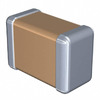 C3216C0G2W153K160AA
C3216C0G2W153K160AA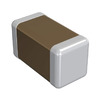 GRM1555C1H181JA01J
GRM1555C1H181JA01J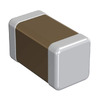 GRM0225C1E7R0WDAEL
GRM0225C1E7R0WDAEL 12066D226MAT2A
12066D226MAT2A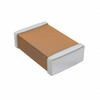 CL21C820JBANNNL
CL21C820JBANNNL GCD188R71E473KA01D
GCD188R71E473KA01D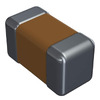 02013A2R7CAQ2A
02013A2R7CAQ2A T521D336M035ATE065
T521D336M035ATE065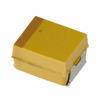 TLNS227M004R3000
TLNS227M004R3000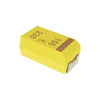 T495D686K020ZTE300
T495D686K020ZTE300
- MPC745BPX300LE
- MAX4053ESE+T
- VI-J51-IW
- R5S72680W266FP#V0
- MC68331CEH25
- MPC8569ECVJAQLJB
- DG406DN-E3
- SY100EL16VKC
- SC4808AIMSTRT
- HIP6311ACB
- V48C5M50AL
- VI-26L-04
- VI-B01-03
- VI-JOY-EX
- TPS40071PWPR
- ADL5801ACPZ-R7
- OPA374AID
- TLV9002IDGKR
- T495A105K025ZTE5K0
- T491D226K020ZTAU00
- ADUM141D1BRZ
- BAL-CW1250D3
- LF50CDT
- LM2990T-5.0
- UCC2894PW
- FC1610-TC-AL
- FSTU32160AMTD
- ISPLSI5384VA
- LTC1419ACG
- M29F400FB5AN6
- TD62003AF-TP2
- CM800DX-24T1
- CY7C131-15NC
- UPD800449F1-522
- MPC951FA
- MST9W92CTLD-LF
- M38D29GCFP
- USB5807CT/KD
- D70F3423GJ